2006 Stren Series preview: Central Division
Central Division anglers set to hurdle some Texas-sized obstacles during 2006 season
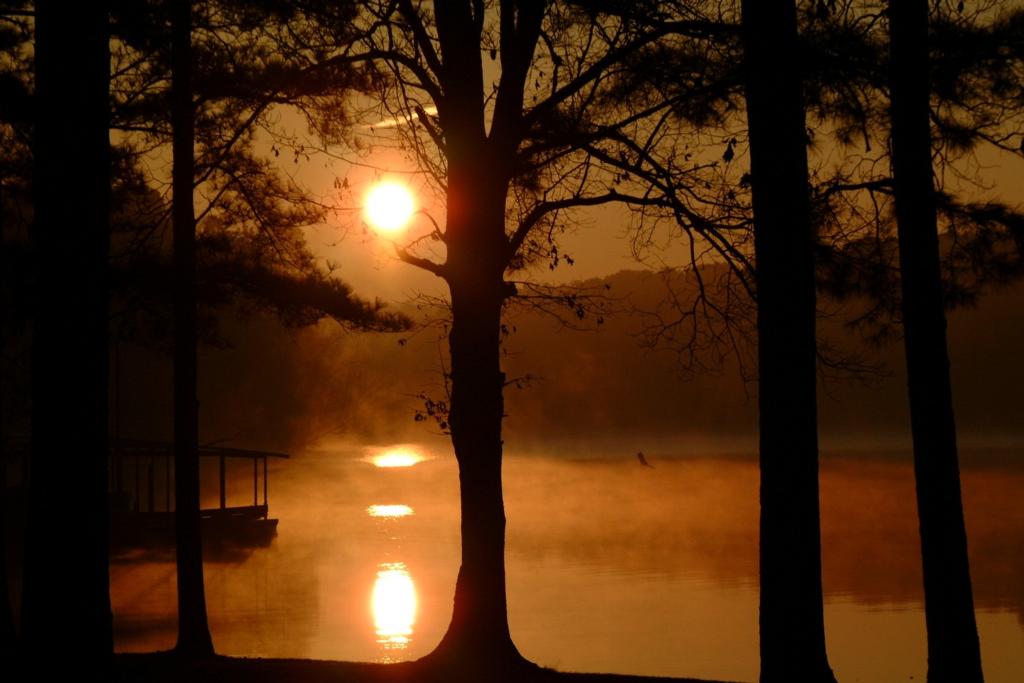
The Stren Series Central Division returns in 2006 with a schedule that, at first glance, seems to be rather homogenous – all four tournaments are in the state of Texas, and two of the four are on Sam Rayburn Reservoir. But whether or not the schedule shows much diversity will likely be a moot point when anglers start hauling in the Texas-sized bass.
The $6 million Stren Series will kick off the Central Division Feb. 22 on Lake Amistad, a frequent Wal-Mart Texas Tournament Trail destination that is on the Stren schedule for the first time. A month later is the first Sam Rayburn event followed by another new Stren stop, Lake Texoma, in late April. The season then wraps up with a mid-May event on Sam Rayburn.
On the line for Stren Series anglers this year is a chance to compete in the $1 million Stren Series Championship. However, competitors will also be gunning for a slot in the 2007 Forrest Wood Cup, which could award as much as $1 million to the winning pro. Each regular-series Stren Series event in 2006 will pay out as much as $262,125 in cash and prizes, including $60,000 to the winning pro. The winning prize package also includes a fully rigged Ranger boat.
Lake Amistad
Del Rio, Texas
Feb. 22-25
Twenty-plus-pound stringers are the norm at Lake Amistad, a 67,000-acre reservoir located on the U.S./Mexican border. With waters flowing from the Rio Grande as well as the Pecos and Devils rivers, the lake produces fish practically large enough to qualify as border control.
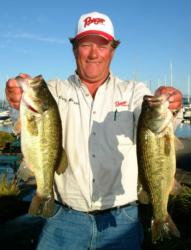 “You can expect heavy stringers,” said Fort Worth pro Craig Workman, who lists a TTT victory at Amistad among his many credits. “The fish are going to be hot and locked on beds.”
“You can expect heavy stringers,” said Fort Worth pro Craig Workman, who lists a TTT victory at Amistad among his many credits. “The fish are going to be hot and locked on beds.”
Workman said the timing of the Amistad event is perfect, as the spawn is just beginning and the weather is getting warmer.
“There are a lot of big fish starting to roam around,” said Workman, calling from Amistad about three weeks prior to the Stren event. “The leading sack the first day is probably going to be about 30 pounds – maybe more.”
Amistad is definitely a largemouth fisherman’s dream, as largemouths far outnumber what few smallmouths the lake maintains. Workman expects sight-fishing to be a major pattern during the tournament, though other means will be successful for fish that aren’t yet on beds.
“If (competitors) are sight-fishing, they will be flipping anything they want to because the fish are going to eat it,” Workman said. “Crankbaiting is going to be good – DD-22s and DD-14s – because not all the fish are coming up at one time. There will still be fish out there holding, and they will be able to catch those if they’re not sight-fishing.”
Workman cited an abundance of cover as one of the reasons why Amistad’s largemouths are so prolific, noting that the water has risen considerably in the last three years.
“There’s good hydrilla, good cover, and a lot of the trees are flooded now,” he said. “The key to fishing Amistad is not to be afraid of clear water, because it is clear. It’s not going to hinder you at all; just fish it like you would fish anything else. These fish down here don’t seem to care, but a lot of us fishermen do.”
Workman said to win the Lake Amistad event, anglers should expect to catch at least 40 to 45 pounds over the last two days.
Sam Rayburn Reservoir
Jasper, Texas
March 22-25
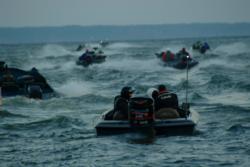 Sam Rayburn, one of the South’s most noted bass factories, is back on the schedule this year not once but twice, and its usual February date has been moved back to March for the 2006 season. According to 2005 Central Division points champion David Curtis, a later date just means better fishing.
Sam Rayburn, one of the South’s most noted bass factories, is back on the schedule this year not once but twice, and its usual February date has been moved back to March for the 2006 season. According to 2005 Central Division points champion David Curtis, a later date just means better fishing.
“In late March, the spawn should definitely be going wide open,” Curtis said. “Obviously some guys will be able to sight-fish. In general, just a shallow, spawning-type pattern is probably what’s going to win the tournament.”
Curtis said the fishing on Rayburn should be stellar at both the March and May events, and whether an angler prefers one or the other just depends on his personal tastes.
“They’re not going to be spawning in May,” Curtis said. “Lake-wise, the March tournament will probably be better; however, (competitors) can catch some really good weights in May also – fish that are moving into their summer patterns. You have guys that prefer springtime fishing and guys that prefer post-spawn, summertime fishing. Both are going to be good tournaments.”
As for the March event, sight-fishing will definitely be the order of the day – that is, unless, an ornery spring wind blows through. In early February, water levels in Rayburn were still very low, and if they stay that way until the end of March, the sight-fishing pattern might not be the most consistent one.
“The lake, being low, won’t fish exactly like it would if it was normal or high,” Curtis said. “There will be some sight-fishing, but it probably won’t be as easy as it would be under normal lake levels. If you get a little bit of wind, you can’t get out of it and get protected. So if the wind blows at all, it can make it a lot tougher for sight-fishermen with the lake down. That could open up avenues for other techniques and methods that would outperform guys who would be sight-fishing that time of year.”
Curtis also said that when the lake is low, the weights are heavier because the fish are more concentrated. That’s good for tournament fishermen in the short-term, but Curtis said that when the lake eventually fills back up, the fish have fewer places to take cover.
“I would say that the key to fishing Rayburn in March is fishing 5 feet of water or less,” Curtis said. “You’re going to have a few that are going to be a little deeper, but in March, it’s shallow, shallow, shallow.”
Curtis predicted that the two-day cut weight would likely be around 28 to 30 pounds.
Lake Texoma
Denison, Texas
April 26-29
Lake Texoma is another favorite TTT destination the Stren Series is visiting for the first time this year. Situated on the Texas/Oklahoma border, Texoma will yield good weights, but they probably will pale in comparison to the stringers brought in on Amistad and Sam Rayburn.
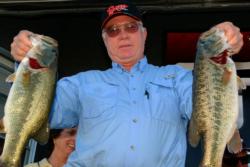 According to Tyler, Texas, pro Rick Turner, the Texoma smallmouth and largemouth will likely be in a post-spawn frame of mind when the tournament comes to town.
According to Tyler, Texas, pro Rick Turner, the Texoma smallmouth and largemouth will likely be in a post-spawn frame of mind when the tournament comes to town.
“There will probably still be some fish on beds, but I don’t think that will be the main thing,” Turner said. “I think it will be post-spawn where the better sacks come from.”
Typically on Texoma, Turner said, the bulk of a competitor’s five-bass limit will be from smallmouths, with a kicker largemouth or two ideal for rounding out a stringer. The tournament can be won on smallmouth bass alone, though a mixed bag will likely take home the trophy.
“I think if I win, it will be with smallmouths,” said Turner, who took home the TTT Texoma crown in 2005. “I think there will be a lot of really good smallmouths weighed in at 3 1/2 to 5 pounds, but a lot of fishermen won’t have a five-fish limit of smallmouths – they’ll have some largemouths to go with it.
“I don’t think an angler will have a limit of 3-pound-plus smallmouths. If a man can get on a good smallmouth pattern, he can get by with smallmouths and win the tournament with them. If an angler gets on a mixed bag where he’s got a couple of 4-pound largemouths and two or three good smallmouths, that could also win the tournament.”
Turner named main-lake rocky points and bluff banks in 12 to 18 feet of water as the ideal place to find Texoma smallmouths, and he expects finesse baits and jigs to be the ticket to taking home the win.
As for largemouths, Turner expects to find them on breaks, from 8 feet on top breaking to 15 to 20 feet. However, Turner warns that Texoma can be fickle.
“Texoma has a habit of turning tough on you without any kind of warning,” he said. “You can have a really good practice, and then for no reason at all, it just gets hard to get a bite. I look for most guys to have a limit, but I don’t look for a lot of them to have a heavy bag. I think an 8- to 10-pound limit will be pretty common.”
Turner said he believes it will take around 18 pounds to make the cut.
Sam Rayburn Reservoir
Jasper, Texas
May 17- 20
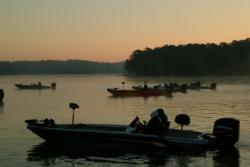 According to Jasper, Texas, pro Chris McCall, any time is a good time to fish Sam Rayburn. Even though the post-spawn fish might weigh a little less in May, Rayburn will still produce lots of big bass for the weigh-in crowds.
According to Jasper, Texas, pro Chris McCall, any time is a good time to fish Sam Rayburn. Even though the post-spawn fish might weigh a little less in May, Rayburn will still produce lots of big bass for the weigh-in crowds.
“The fish will be spawned out for the most part,” McCall said. “There will be a lot more fish caught deeper than you’d normally go. You should see a lot of numbers, but the weights will come down because they won’t be really big and fat or fully recovered from the spawn yet. But there will still be a lot of big fish caught because there are so many at Rayburn, and it’s fishing unbelievably right now.”
Indeed, May-June is a transition time for Rayburn bass, unlike the typical feast that can be found there from November through April. McCall expects competitors to catch them mainly on Carolina rigs and deep-diving crankbaits.
“The other thing that time of year is you catch a lot of top-water fish that are still hanging around the shallows from the spawn,” he said. “There will be a lot of fish caught on a Gambler Cane Toad or on a top-water like a Zara Spook. Carolina-rigging centipedes, lizards and Flukes should also be the main deals going on that time of year.”
On Rayburn, of course, success often hinges on how well one can manage the lake’s abundant hydrilla. McCall says that will be no different in a May time frame.
“You’ve got to have some type of pattern that’s working around the grass,” he said. “Whether it’s a top-water bite or a Carolina-rig bite, it’s got to have something to do with the hydrilla if you’re going to be successful on Sam Rayburn.”